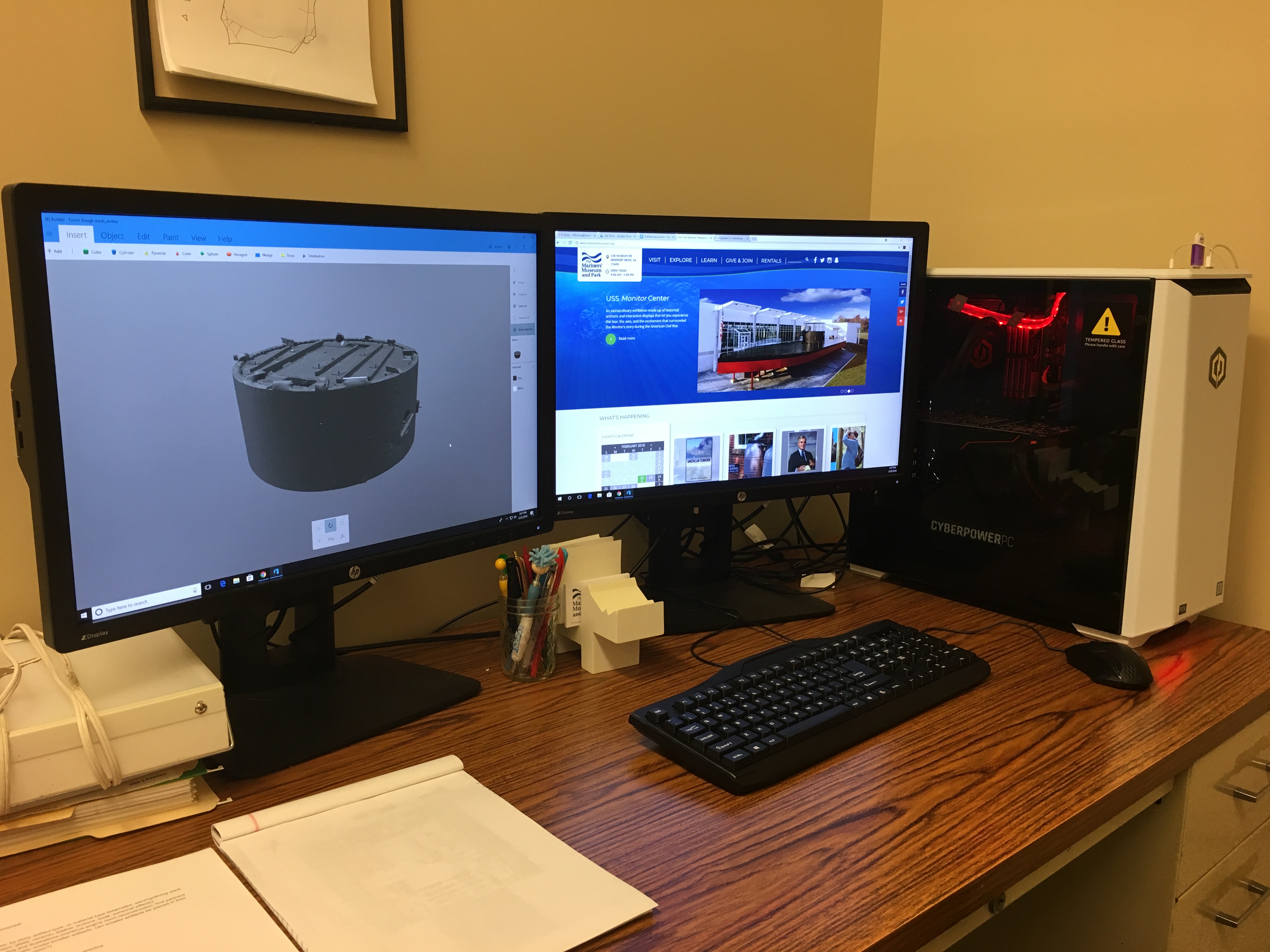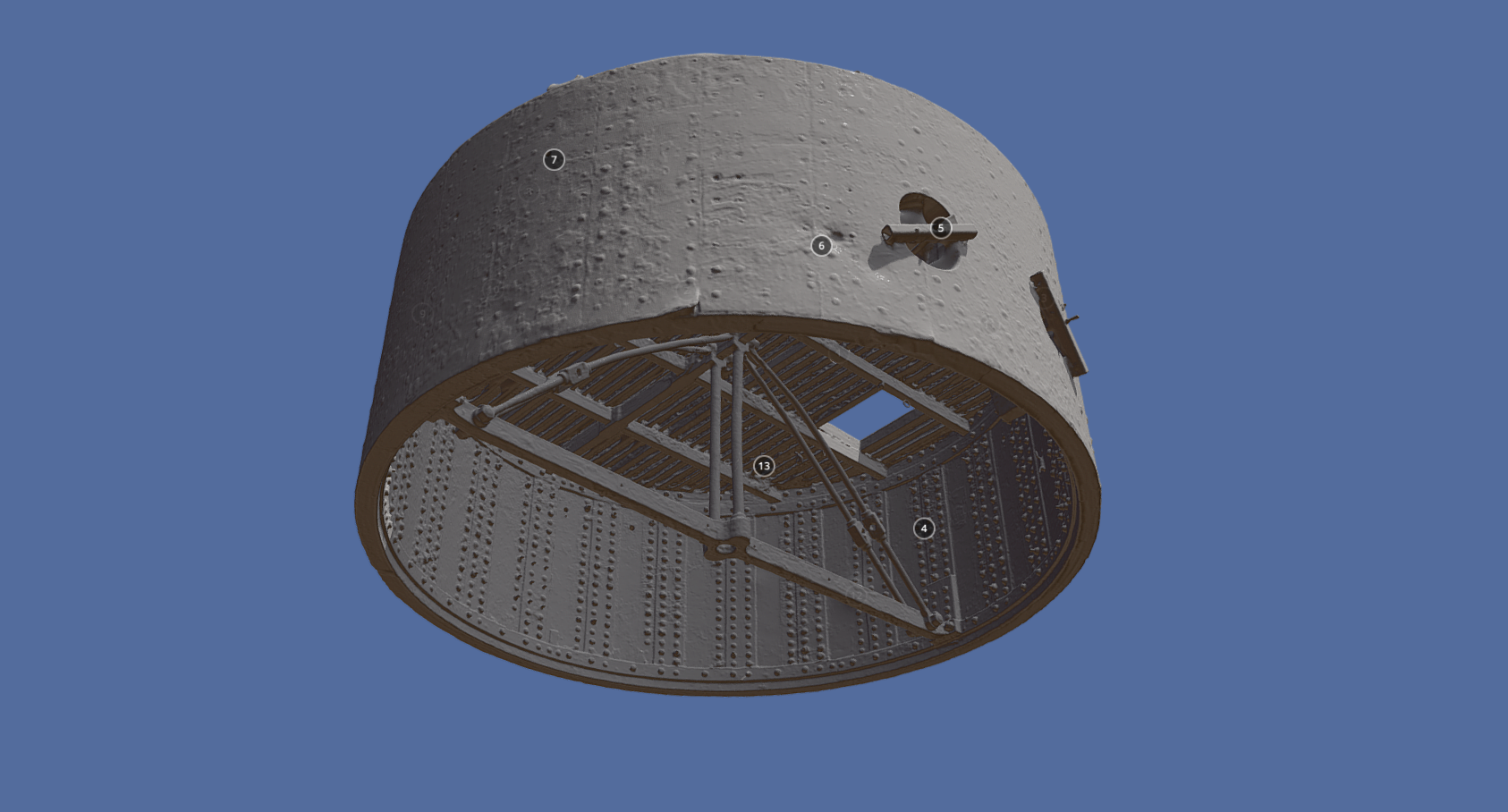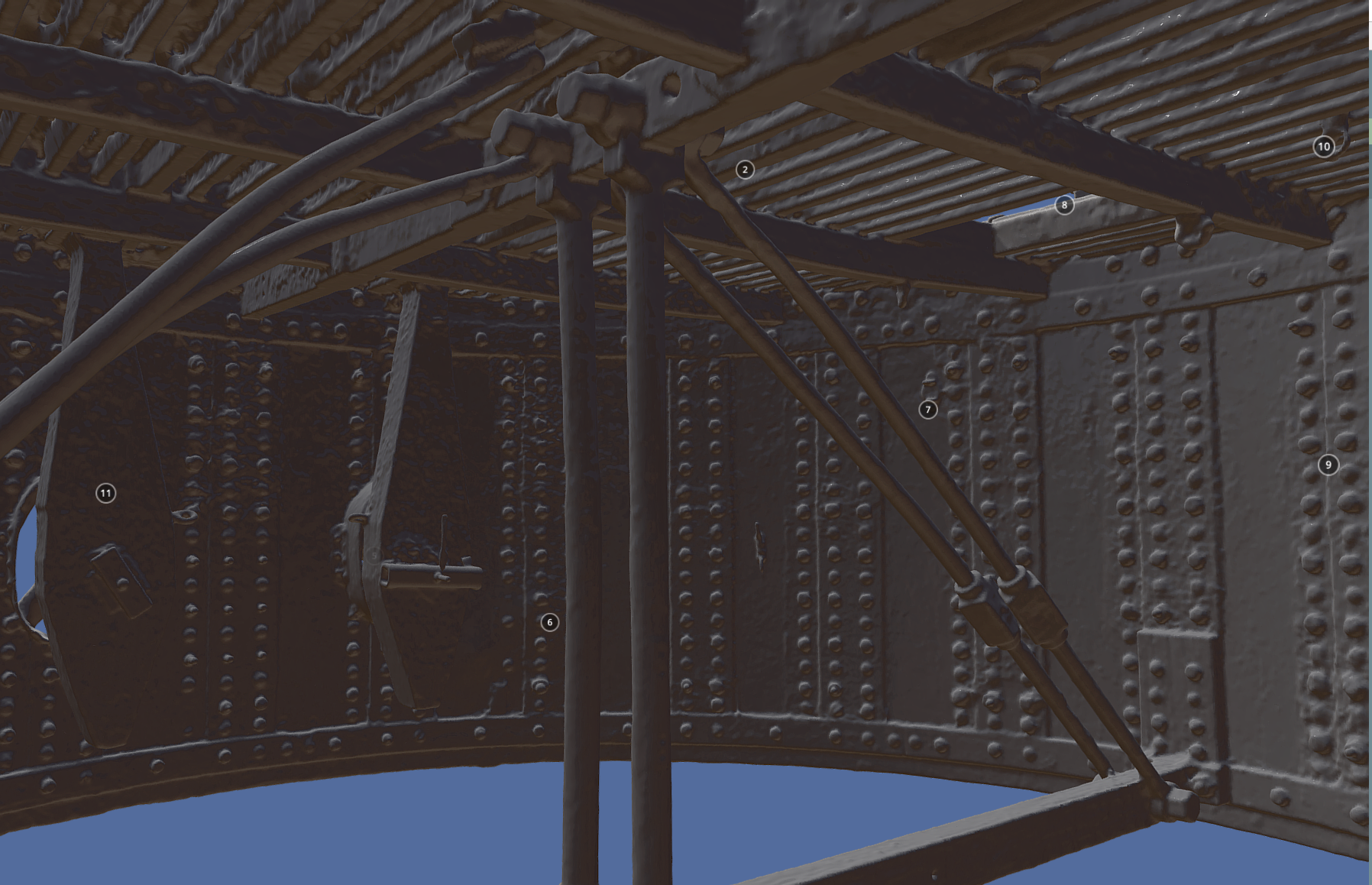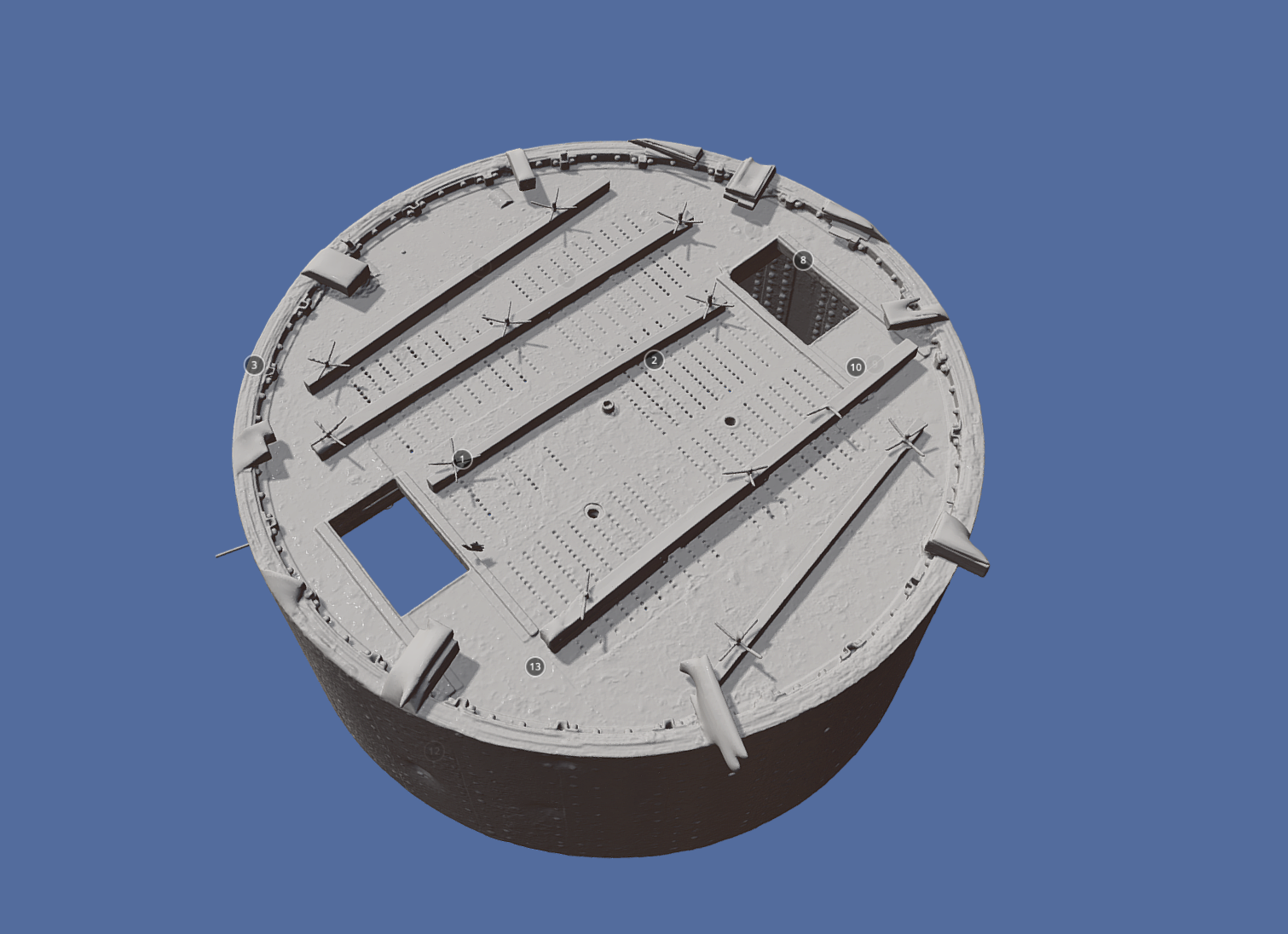We apologize for the recent radio silence on the Conservation Department’s side of things. We have been chugging along – slowly but surely – on smaller, individual projects. However, I am excited to share an update on the Department’s 3-D modeling efforts! Some really exciting things have happened since last we spoke of our virtual artifact attempts a year ago.
We were finally able to purchase, build, and install a lovely (and very powerful) photogrammetry computer granted to us by the Bronze Door Society. It has gotten plenty of “ooohs” and “aaahs” from the lab staff and other museum personnel. This beautiful, shiny machine is powerful enough to run high quality models based off thousands of pictures and millions of 3-D points in minutes (or at most hours), where it used to take us days or weeks. (Thank you, again, Bronze Door Society!)

This has finally allowed us to open, view, and share the laser scan data taken of the turret in the summer of 2016! Check out the model on NOAA Monitor National Marine Sanctuary’s Sketchfab, where you can rotate, manipulate, and study the features of the Center’s largest artifact.

Want to know what’s even better? We can flip the turret over, to its original configuration, and go inside the artifact – giving even the at-home viewer a real sense of “being there”. Even for us staff who have actually been inside the turret, this is incredibly surreal. We have only ever known the turret upside down, and now we can picture the roof over our heads, the turnbuckles and gunports in their correct orientation, and it feels enclosed, tight, and a little claustrophobic. (I am definitely glad I was not onboard in March 1862.)

If you spin the turret, you will see that we have an excellent overall view of the outer roof, too! This is something that we have not been able to really accomplish well before, because it was only 3-feet off the ground and there are so many supports in the way. You can still see some of the supports that butt right up to the artifact in the model.

And to top it all off, the model is to scale within millimeters; meaning, we can really study its features and dimensions in a way we have been unable during the past 16-years of treatment.
We have to give a HUGE shout out to API Services for this work. We are awestruck by what they have been able to accomplish with this artifact and by what we are going to be able to do with the data. Wow! Check out the newest model, let us know what you think, and join us in thanking API for all their assistance over the last two years!